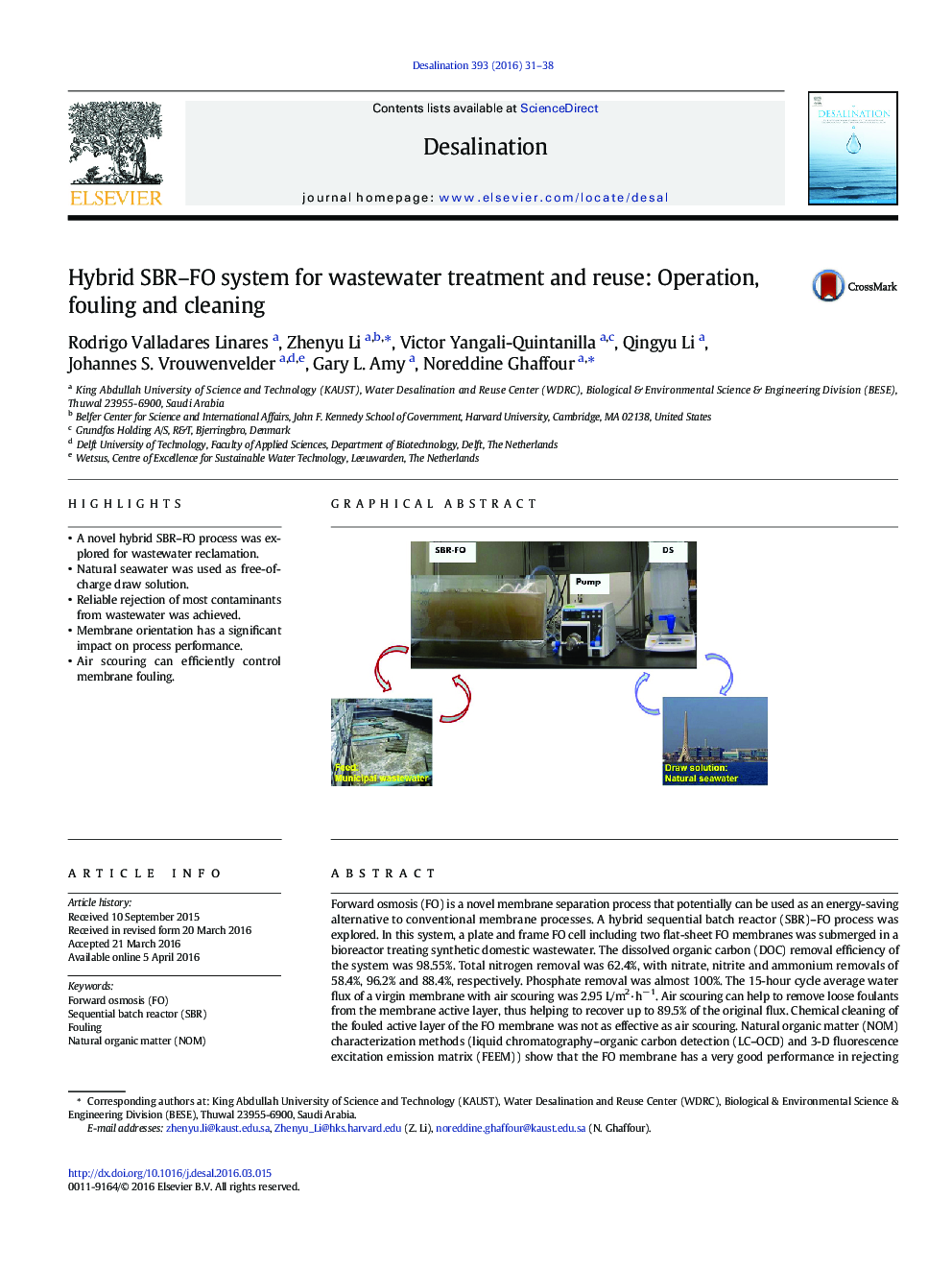| کد مقاله | کد نشریه | سال انتشار | مقاله انگلیسی | نسخه تمام متن |
|---|---|---|---|---|
| 622717 | 1455302 | 2016 | 8 صفحه PDF | دانلود رایگان |
• A novel hybrid SBR–FO process was explored for wastewater reclamation.
• Natural seawater was used as free-of-charge draw solution.
• Reliable rejection of most contaminants from wastewater was achieved.
• Membrane orientation has a significant impact on process performance.
• Air scouring can efficiently control membrane fouling.
Forward osmosis (FO) is a novel membrane separation process that potentially can be used as an energy-saving alternative to conventional membrane processes. A hybrid sequential batch reactor (SBR)–FO process was explored. In this system, a plate and frame FO cell including two flat-sheet FO membranes was submerged in a bioreactor treating synthetic domestic wastewater. The dissolved organic carbon (DOC) removal efficiency of the system was 98.55%. Total nitrogen removal was 62.4%, with nitrate, nitrite and ammonium removals of 58.4%, 96.2% and 88.4%, respectively. Phosphate removal was almost 100%. The 15-hour cycle average water flux of a virgin membrane with air scouring was 2.95 L/m2·h− 1. Air scouring can help to remove loose foulants from the membrane active layer, thus helping to recover up to 89.5% of the original flux. Chemical cleaning of the fouled active layer of the FO membrane was not as effective as air scouring. Natural organic matter (NOM) characterization methods (liquid chromatography–organic carbon detection (LC–OCD) and 3-D fluorescence excitation emission matrix (FEEM)) show that the FO membrane has a very good performance in rejecting biopolymers, humics and building blocks, but a limited ability in rejecting low molecular weight neutrals. Transparent exopolymer particles (TEP) and other biopolymers might be associated with fouling of the membrane on the support layer. A 1% sodium hypochlorite (NaOCl) cleaning solution was proved to be effective for removing the foulants from the support layer and recovering the original flux.
Figure optionsDownload as PowerPoint slide
Journal: Desalination - Volume 393, 1 September 2016, Pages 31–38
